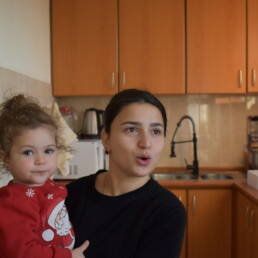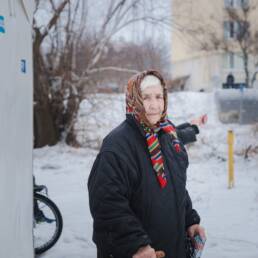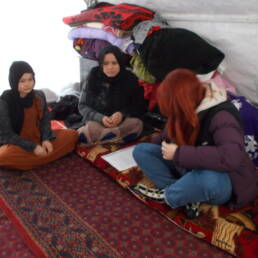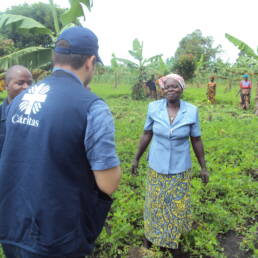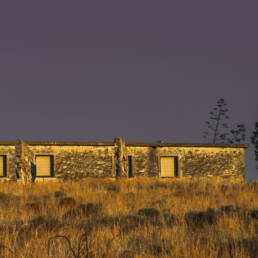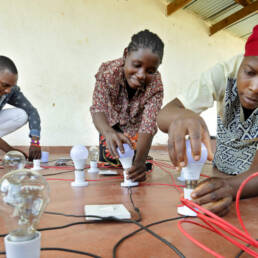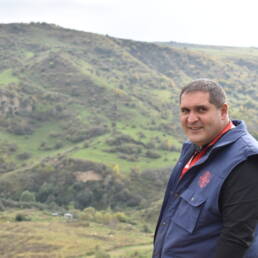Author
Jelena Mićović
Project Coordinator
Caritas Serbia
Nearly 2,000 people live in a slum surrounded by uncollected garbage as the local authorities refuse to remove it if the inhabitants do not pay their taxes.
Even the water is only available to purchase. But at the heart of this community stands a small stone church built by a Catholic priest with the help of Romani neighbours and a Caritas centre that offers a clean and nicely decorated play area for the children.
Coming from a non-EU country where I have been working for years with members of the impoverished Roma community, I was excited to participate in the study visit of the Caritas Europa Community of Practice on Roma Inclusion.

Although I knew that the Roma community in Slovakia still struggles to become completely included in Slovak society, I expected to see and learn how an EU member state has been dealing with this social challenge, hoping to get ideas and inspiration from projects and measures that could also be implemented in my country, especially as Slovakia and Serbia are similar in size in terms of both the general and Roma populations.
Unfortunately, I was disappointed very quickly when I saw that the living conditions of the Roma communities in Serbia and Slovakia are almost equally bad. In both countries, a large proportion of the Roma community is still trapped in a cycle of poverty, discrimination and marginalisation. The fact that Slovakia is an EU member state has no influence whatsoever.
This realisation was very disillusioning as I regarded the EU as a community of shared values where the value of equality has a crucial societal role. However, this is not the case when Romani people are concerned – wherever they may live. Sečovce, an idyllic town of 8,500 inhabitants in the Trebišov District in southeast Slovakia, lies approximately 20 kilometres east of Košice on the road to Ukraine.
When driving from Košice, you can see the buildings and the tower of the old church in the centre of Sečovce from far away, but approximately two kilometres before you reach the old town, on the right side of the road, lies the Roma settlement of Sečovce, popularly called Habeši. Habeši in Slovak means Abyssinia (former name of Ethiopia).
Nobody knows exactly how many inhabitants the settlement has, but estimates are that between 1,700 and 2,000 people live there. The settlement consists mostly of sheds. In the centre are three very damaged apartment buildings, most probably abandoned relics from socialist times.
In front of one of the buildings is a water tap, where inhabitants of the settlement can buy water. Yes, buy. Next to this building is a small stone church built by a Catholic priest with the help of Romani neighbours. This little church is the only decent-looking building in the whole settlement. Although there is an uncultivated field between the settlement and the first houses of Sečovce, there are no plants in the settlement, just dusty roads and huge piles of garbage.

The smell of garbage is everywhere and unbearable to anyone who does not live there and is not used to it. The local Caritas colleagues explained that the inhabitants of the settlement do not have enough money to pay for the removal of the garbage and, therefore, the local administration has stopped providing the service.
But let us go back to the beginning. The first house in Sečovce when coming from the Roma settlement is a Caritas community centre for children. It is a nicely decorated and adequately furnished house with a green playing yard behind it, where children of the settlement can play, learn and stay every working day of the week. Since the summer holidays had already begun when we visited the centre, the yard was full of playing children. Some were riding bicycles, others were playing in the sand box or the grass yard.
The head of the centre explained that they aim to support children in their education and upbringing and prevent them from leaving school too soon. But they also want to give the children the opportunity to play and socialise in a safe and clean environment, to be away from the dust and stink of the settlement for at least a couple of hours per day.
The very harsh reality we saw during the visit confirmed my belief that we have to continue advocating for the rights of Roma people with our Caritas CoP on Roma Inclusion, especially for their right to live in humane and decent conditions.
However, I am sceptical that we will achieve significant changes, considering the fact that poverty is more and more regarded as an individual problem for those who are poor. In this highly individualised world, our dedicated Caritas colleagues and members of the Church from Slovakia have shown us another approach: being close to those in need, establishing community centres and assisting Romani children and young people to overcome poverty through education. I hope we will find the strength and resources to follow their path in Serbia.
Photos courtesy of Caritas Europa’s Community of Practice (CoP) on Roma Inclusion.
To learn more about Caritas Europa’s advocacy work, read the position paper on Roma inclusion.




